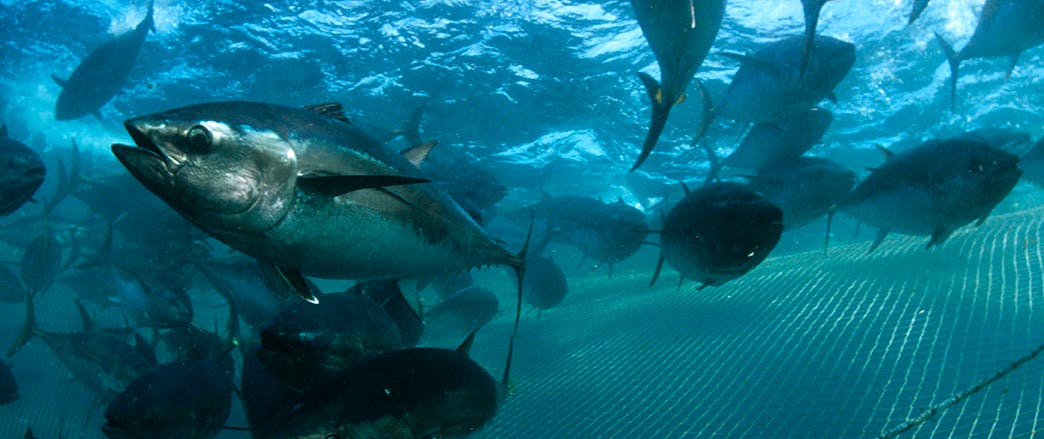Draft Aquaculture (Zones – Lower Eyre Peninsula) Policy 2022
Consultation has concluded. Thanks for your contributions.
Have your say on the proposed Draft Aquaculture (Zones – Lower Eyre Peninsula) Policy 2022 to support the sustainable growth of aquaculture in South Australia.
What's being decided?
The Department of Primary Industries and Regions (PIRSA) wants to hear from you about the proposed Draft Aquaculture (Zones – Lower Eyre Peninsula) Policy 2022.
The Draft Policy has been prepared following a review of the current Aquaculture (Zones – Lower Eyre Peninsula) Policy 2013 to support the sustainable growth of aquaculture for both the existing established aquaculture sectors (i.e. wild-caught tuna, finfish, mussels, oysters and abalone) and the emerging sectors, such as algae (i.e. seaweed). It aims to make sure the zone policy stays relevant and appropriate in relation to the latest science and industry developments, and maximises benefits to the community from the State’s aquaculture resources.
A supporting Report has been prepared to provide a detailed explanation of the purpose, development and effect of the Draft Policy.
The main changes in the Draft Policy are:
- Permitting sustainable growth in the bivalve mollusc and algae sectors to encourage regional integrated multi-trophic aquaculture opportunities whereby one sector assists to offset nutrient outputs of another.
- Permitting sustainable growth for aquaculture-related tourism businesses in addition to research and education.
- Permitting additional classes of aquaculture, including echinoderms, to support sustainable growth for these developing sectors.
- Consideration of the latest scientific modelling, incorporating oceanography and nutrient assimilation, to determine ecologically sustainable growth (i.e. biomass limits and spatial allocation) of supplementary fed classes of aquaculture, in particular wild-caught tuna and finfish.
- Improved biosecurity provisions of an existing aquaculture zone for the temporary farming of bivalve molluscs (excluding mussels).
- A new aquaculture exclusion zone around Dangerous Reef and additional management arrangements based on the latest science to protect Australian Sea-lion populations.
Background
Aquaculture is the fastest growing primary industry in Australia and aims to meet the ever-increasing global demand for seafood as well as serving other purposes such as ecosystem services, and carbon and nutrient offsets through bivalve mollusc and seaweed production for example.
South Australia is a world leader in the ecologically sustainable development of aquaculture, with one of Australia’s most comprehensive legislative frameworks in place to protect and manage the State’s aquatic resources whilst encouraging investment, growth and benefit to the community. South Australian aquaculture has a reputation for producing safe, sustainable, high quality and high value seafood products. The direct value of SA aquaculture production in 2020–21 was $200.1 million.
Aquaculture zone policies are a multi-use marine spatial planning tool which identify areas where aquaculture can, and cannot, occur, and the types of aquaculture and amount permitted to be farmed.
Importantly, aquaculture zone policies do not approve the grant of any individual aquaculture lease and corresponding licence to undertake aquaculture within its boundaries. This is a separate application assessment and approval process under the Aquaculture Act 2001, which involves a competitive tender public call process, independent assessment by the Aquaculture Tenure Allocation Board, public notice inviting feedback, ecologically sustainable development risk assessment, and referral to other stakeholders for comment or approval, such as the Environment Protection Authority.
The current policy was last reviewed in 2013 and is one of the most diverse and in-demand aquaculture areas within State waters, with all established aquaculture sectors licensed to be farmed.
Reviewing the current policy to consider the latest science and industry developments (including the emerging algae aquaculture sector) will ensure it stays relevant and appropriate by making the best sustainable use of marine resources for aquaculture.
PIRSA reviewed the current policy in consultation with key aquaculture industry sectors and State Government agencies. The new Draft Policy will allow fresh aquaculture opportunities for the local region and will stimulate sustainable growth.
Get involved
Find out more:
- Read the Draft Aquaculture (Zones – Lower Eyre Peninsula) Policy 2022
- Read the Report supporting the Draft Aquaculture (Zones – Lower Eyre Peninsula) Policy 2022
- View a map of the current and proposed Draft Policy on AgInsight. (Use the SELECT FOCUS tool to obtain further information about each zone; use DATA LAYERS to switch the current and Draft Policy layers on/off; use the LEGEND to identify features)
The consultation documents are also available:
- by email request to pirsa.aquaculture@sa.gov.au
- by phone request to (08) 8207 5333
- from PIRSA Fisheries and Aquaculture, 2 Hamra Avenue, West Beach
Have your say by:
- taking our survey below and telling us what you think of the proposed changes.
What are the next steps?
We will consider your feedback to finalise the draft Aquaculture (Zones – Lower Eyre Peninsula) Policy 2022 and provide a Submission Response Document that will be available on this site.
It is expected the final policy will be released in 2023 and will be available on this page and the PIRSA website.



